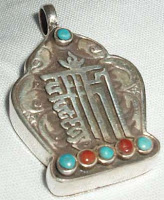Ingredients:
1/2 kg Flour (Atta)
1/2 kg Flour (Atta)
1/2
tbsp Baking powder
1/2 tsp
Turmeric power
1 tsp
Cumin powder
1 tsp
Coriander powder
1 tsp
Ginger and Garlic paste
Salt
to taste
Sunflower
Oil (for deep-frying)
Procedure:
Mix flour, baking powder,
turmeric powder, cumin
powder, coriander powder, ginger-garlic paste and salt in a bowl. Stir the mixture properly and
then add
water to it, little by little stirring it continuously to make a thick
paste. The batter should be thick enough to drop down in the oil as a dollop. Cover
the bowl and leave it overnight for better results. However, you can also make
it instantly.
Heat oil for deep frying. The
oil should not be very hot otherwise the mixture will get instantly burnt from
outside without the interior getting cooked. It should be on medium heat. Now
take a tablespoon of the batter and put it in the oil, just like pakoras. You
can cook several of them at a time. The batter should slowly fluff up. Fry
until it gets a good brown colour. Take out the now prepared Gwarmaris and
soak the oil in a paper. Serve hot with tea.
On a personal note, I believe this is one of the easiest recipe I have come across till now which can be cooked at any time as the ingredients are almost readily available at homes. On a cold rainy evening serve it with hot tea to your loved ones.









































